Meet the new Arable Insights farmer panel for 2025-26
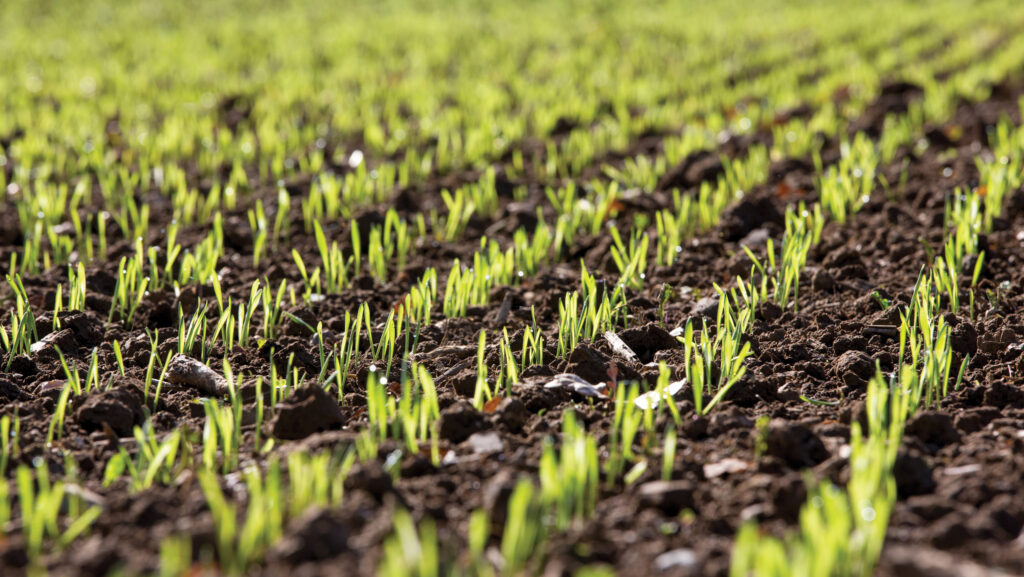 © GNP
© GNP The Arable Insights farmer panel, our barometer on arable issues, is back for the 2025-26 cropping season with six new farmers from across the country.
Here is an introduction to their arable businesses.
See also: Wilts OSR grower reveals lessons from sheep grazing trials
East Midlands
Tess Lincoln, Burton Lazars Farms, Little Dalby Estate, Leicestershire
- Farm size 560ha
- Cropping 240ha of winter wheat (biscuit or feed) with 260ha split between spring malting barley, spring beans, milling oats and SFI (options include herbal grass leys, winter bird food and unharvested cereal headlands). 60ha of permanent pasture.
- Livestock 100 head of Aberdeen Angus crosses for beef fattening and 250 Herdwick breeding ewes
- Soil type Clay loams to heavy clay.
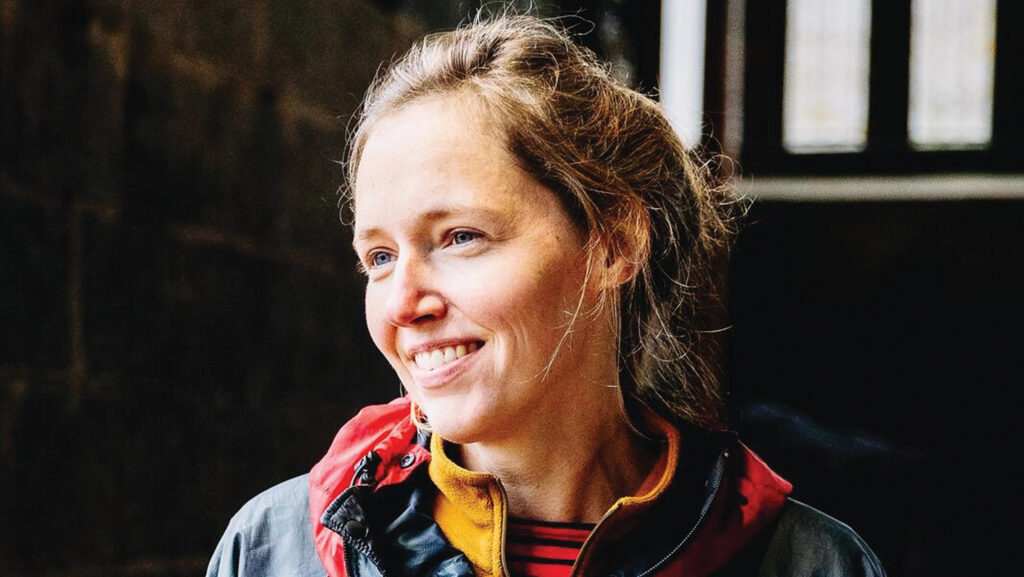
© Tess Lincoln
Tess Lincoln and her husband Tom have been running Burton Lazars Farm on the Little Dalby Estate for a few years.
It was only early this year that they fully took over the tenancy from her grandfather, Tony Reynolds.
The land is owned by the Ernest Cook Trust.
Tony was one of the early adopters of no-till establishment, a legacy that Tess is maintaining on the farm.
A key change over the past five years has been the gradual increase in stock numbers to continue the transition to a regenerative system.
This has been helpful in mitigating the current difficult financial environment for the arable enterprise.
“We bought five Herdwick sheep during Covid, and since then increased numbers to 250,” Tess says.
Muck from the cattle is spread back on the arable land, while the sheep graze cover and arable crops. “We’re trying to reduce inputs,” Tess says.
“Which is where the stock has come in – the sheep are our T0 and T1 fungicides, cutting our fungicide bill by a third. We’re also 100% insecticide-free.”
The farm is experimenting with the use of digestate to cut synthetic fertiliser use, although Tess admits it’s still a work in progress.
“We haven’t quite found the right thing for us yet.”
With a footpath running through nearly every field, facilitating public access and engagement is a key aim for the business.
“We’ve started doing school visits, but it’s also important to get adults onto the farm.
“We’ve done a social media campaign to try to inform local residents of what we do and why, and operate an open-door policy for visits.”
South
Andy Meecham, St Giles Farms, Shaftesbury Estate, Wimborne St Giles, Dorset
- Farm size 1,400ha
- Cropping 400ha winter wheat (milling and feed); 100ha winter malting barley; 90ha winter beans; 210 ha spring malting barley; 200ha spring naked oats; 100ha of combining peas; 50ha of poppies; 300ha of grassland or SFI/Mid Tier Countryside Stewardship (grass margins, wild bird food, cover crops, low input grassland and flood mitigation on grassland)
- Livestock None
- Soil type Mainly chalk with some clay caps.
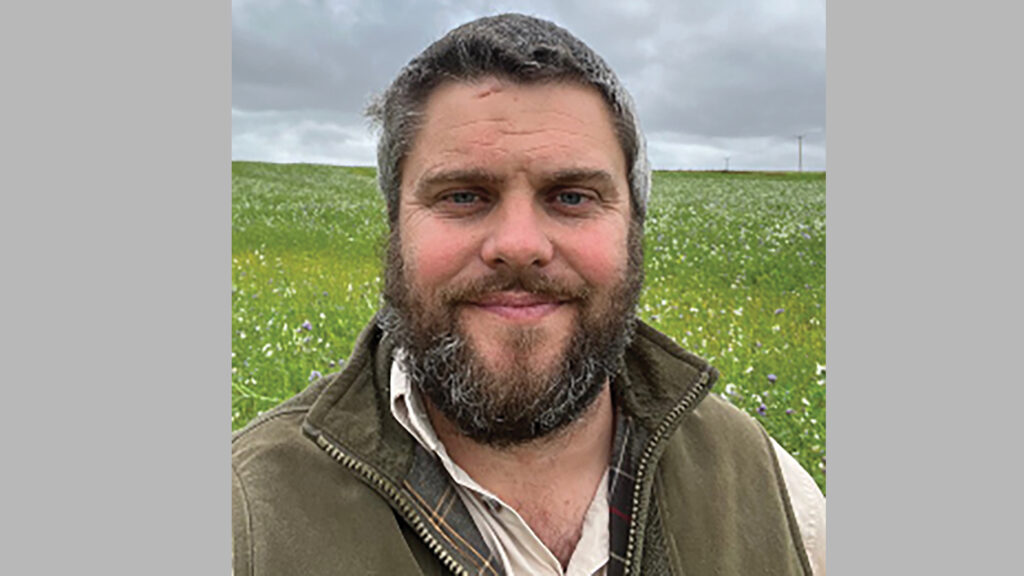
© Andy Meecham
The farm grows predominantly a diverse range of combinable crops at St Giles Farms on the Shaftesbury Estate.
Farm manager Andy Meecham’s key aims on the farm are to marry efficient production of crops with more environment-friendly forms of farming.
“We’re trying to be more resilient against the vagaries of the weather, hence the diverse spread of crops and a drive to improve soil health,” Andy says.
Tillage operations have been reduced, with decisions made on a field-by-field basis about the level of cultivations required, if any, he says.
“If a field allows us to direct drill, we will, but if we need to cultivate, we will. We’re not diehard either way.”
That includes ploughing, with the kit still available on the farm – although it hasn’t been used for the past six years, he says.
Blackgrass and brome are present in some fields, but are not a major concern.
Inorganic fertiliser use is slowly being reduced, with a big push to use food waste digestate, human sludge and compost.
Most of the crops grown have the potential to attract an end market or niche crop premium.
Andy is also trying to mitigate risks by fixing prices on contracts to help with budgeting as much as possible.
Next harvest’s winter barley is already fixed on to min/max contracts, while winter wheat is fixed a year in advance of harvest.
“We’ve got a good base price and if that’s the worst, that’s great. Unfortunately, in the past few years, it’s quite often been the best price.”
The main challenges for the business currently stem from the low commodity prices not offsetting high machinery costs.
That’s leading to the farm running machines for longer, budgeting for higher repair bills, and questioning use.
“We’re reducing tractor numbers currently to help fund replacements.”
North West
Martin Caunce, Brow Farm, Ormskirk, Lancashire
- Farm size 54ha
- Cropping Linseed, wheat, barley, oats, rye, peas and sunflowers
- Livestock Free-range pigs and peacocks
- Soil type Sands to eroded peat.
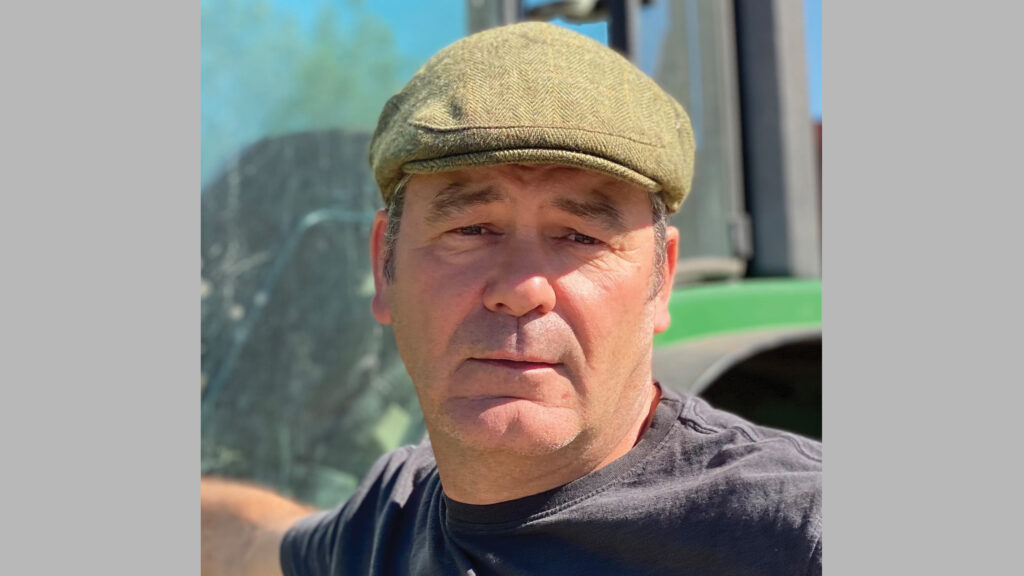
© Martin Caunce
In the heart of the West Lancashire vegetable growing area around Ormskirk, Martin Caunce does things differently to almost everyone else.
At the beginning of the 2000s he stopped growing highly intensive vegetables as it was becoming financially unsustainable without further massive capital investment.
He was also concerned about the level of inputs needed.
“By the end we were only growing potatoes and carrots,” Martin recalls.
“We kept upgrading our old grading line, but it was going to take a million to put a hydrocooler and scrub wash in, and we couldn’t afford to do that for 20ha of potatoes every year.
“We’d need to have doubled our area, so we got out, and it was the best thing we ever did.”
He rented out some land each year to a local lettuce and salad crop producer, but as of the coming season that’s now finished.
“We’d cut the area back slowly, and they’ve just finished harvesting their last crop of spinach.”
On the remaining area he transitioned to a low-input, regenerative system growing a variety of combinable crops, which he then sells direct to niche markets online for a premium price.
For example, spring wheat is sold as wheatgrass seed, which the customer grows on in trays to be used for juicing, microgreens or pet food.
“Currently it’s £30 for a 20kg bag, so that’s £1,500/t,” Martin says.
Similar markets exist for barleygrass and oatgrass seed, and peas for microgreens.
Milling wheat is sold at a similar price direct for home milling and artisan bakers, while he’s found a market for buckwheat pillows and yoga bolsters.
“It’s growing crops how they want them,” he says. “They don’t want it sprayed with pesticides. I’m prepared to take the cut in yield, and I’ve found a market where we can do it.”
Scotland
David Aglen, Inverarity Farms Ltd, Cransley, Fowlis, Angus
- Farm size 500ha
- Cropping Winter and spring oats, winter wheat, vining peas with some land rented out for potatoes
- Livestock None on farm, flying flocks of sheep used to graze crops; chicken sheds rented out for third-party broilers and organic egg laying businesses with 900t muck available for use on farm each year
- Soil type Sandy silt loam.
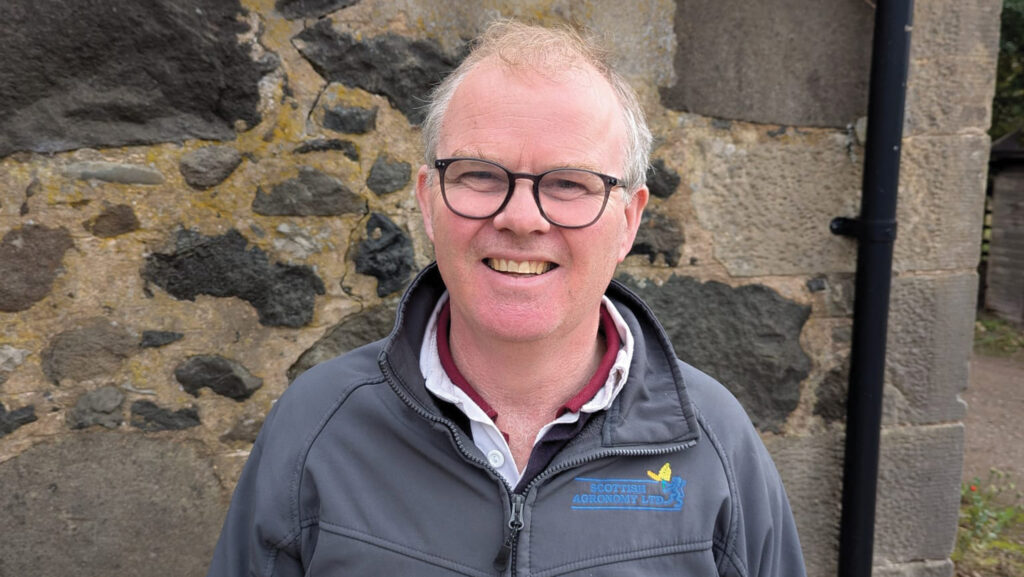
© David Aglen
Arriving on the farm as farm manager last April, David Aglen is still evaluating current practices, knowing he needs to prove to the owners that’s its worth investing in any proposed changes.
The farm has a history of plough-based cultivations and high input use, which David is already seeing some downsides to, with soil erosion a key challenge, albeit on a farm that achieves very good yields.
“One aim is to reduce the amount of cultivation to improve soil structure and reduce some of the soil erosion issues that can happen on this type of land,” he says.
“I was surprised how sensitive sown soil was to a half inch of rain in 15 minutes last month.
“While many people wouldn’t have thought it was that bad, when your soil is washing down the hill past your eyes, it’s your future that’s disappearing in front of you. We need to change that.”
It won’t happen all at once, though. “We’re not going to be able to do without the plough in the short term, especially with the cost of changing the system.
“We’re likely to hire direct drills in to try, for example.”
As a start, a Claydon drill on demonstration has drilled 6ha of wheat and 16ha of cover crops this autumn.
Rye was chosen for the cover crop for reliability.
“We’re not really geared up to establish cover crops after harvest yet, but the intention is to broadcast more rye and vetch covers into standing wheat crops next summer.”
He’s looking out for opportunities to integrate livestock – sheep will graze crops over winter – but without any infrastructure it’s not easy.
“I haven’t even got a pen to hold cattle in,” he says.
There’s no pressure to make big changes, he stresses. “But I think for the sake of the farm, the land and ultimately the business, it will need to change.”
East Anglia
James Porter, Porters Farms (Walpole), Halesworth, Suffolk
- Farm size 600ha of owned and contract farmed land
- Cropping Winter wheat, oilseed rape, vining peas, spring linseed, spring oats, spring barley, combining peas, plus Countryside Stewardship (grass margins, wild bird food, hedgerow options) and SFI agreements (companion cropping, cover crops, variable rate)
- Livestock None
- Soil type Clay.

© James Porter
Like many Suffolk arable farms, Porters Farms in Walpole uses a minimum tillage establishment method for its range of first wheats and break crops.
“We used to plough for vining peas, but we haven’t ploughed anything for over a decade,” says James Porter.
“We direct drill after oilseed rape and linseed and sometimes peas, unless it needs a set of discs running through.”
Where fields need more cultivation, he’ll use a Shakerator to a depth of about 12.5cm, followed by a Great Plains X-Press before drilling.
“We’re direct drilling about 40-50% of our fields depending on the year,” he says.
Blackgrass is the key agronomy-related challenge, although big strides have been made in getting it under control.
“Our own farm is pretty clean now, and we’re getting a contract farm that we took on six years ago – which was quite bad for blackgrass – to a fairly reasonable level,” James says.
On top of the usual pre-crop cultural and chemical control, every wheat field is hand rogued, usually twice.
“At £45-£50/ha we feel that’s more beneficial than an application of Avadex (tri-allate) – you can see what you’re getting.”
Input use is carefully scrutinised, but James feels he’s cut back now as far as he can without seeing a bigger weed problem or a yield penalty.
The farm has embraced renewable energy, with solar PV panels on shed roofs and biomass boilers which heat the farmhouse and offices.
“We also have a straw boiler for grain drying. That uses linseed straw, which we bale every second or third year. The most we’ve used is about 20 bales in a season.”
North
Richard Bramley, Manor Farm, Kelfield, Yorkshire
- Farm size 220ha
- Cropping 38ha potatoes (processing); 25ha sugar beet; 64ha winter wheat; 36ha winter and spring barley (malting and feed); 10ha spring beans; 24ha oilseed rape and 14ha of stewardship schemes and permanent pasture
- Livestock None (two straw-for-muck deals with neighbours)
- Soil type Alluvial silts and sandy loams.
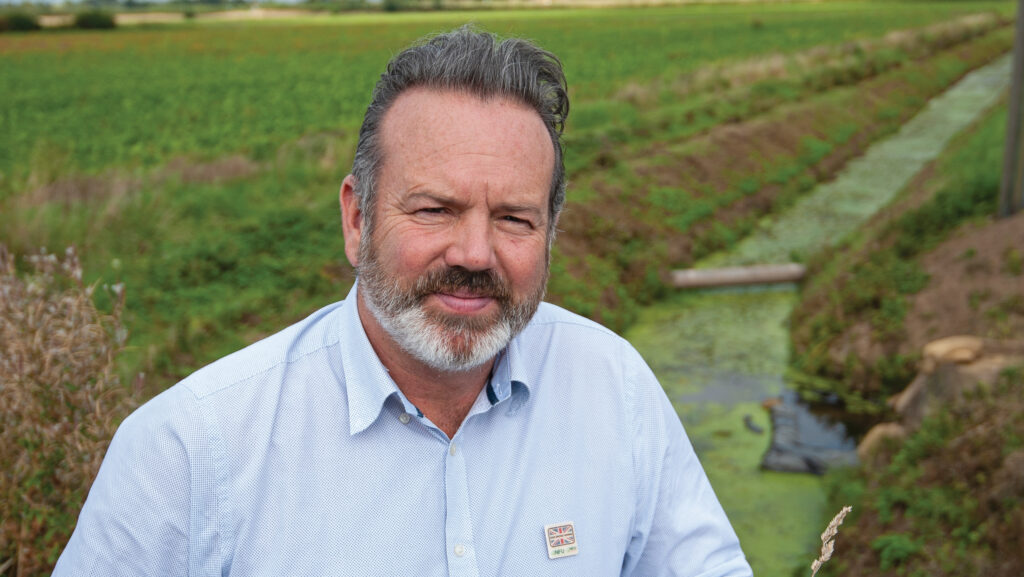
© Richard Bramley
Richard Bramley’s long-term focus has been to improve the farmed environment alongside growing productive crops, without taking a lot of land out of production.
“We’ve remained very production-focused because that is what drives the business,” Richard says. “But I like to improve the environment and soil, alongside that.”
The introduction of cover crops 20 years ago has been a major part of him achieving that.
“I started because I saw a chance to create more opportunities for wildlife within the rotation.
“Since then, the use of cover crops has gained a lot of traction for its role in improving soil health, which I hadn’t necessarily appreciated at the time, although I was always aware of soil health.”
While cover crops were initially funded by the Entry Level Scheme payment, he hasn’t over-relied on the public purse for his environmental work.
“A lot of things we’ve done have been off our own back,” he says.
With up to a third of the farm, which lies beside the River Ouse, at risk from flooding, a key challenge is dealing with the financial impact of what is becoming a more frequent event.
“It’s not every year, but we’ve had 14 inundations since 2000, whereas we only had five last century.”
A key change has been to grow only winter wheat or a spring crop on the area most at risk.
“Winter wheat, if it is established, can survive up to 14 days under water, so it’s the most robust of the crops.
“Even with spring crops, we’ve had floods at the end of September, where we’ve lost potatoes and sugar beet, so it’s not a guarantee.”

